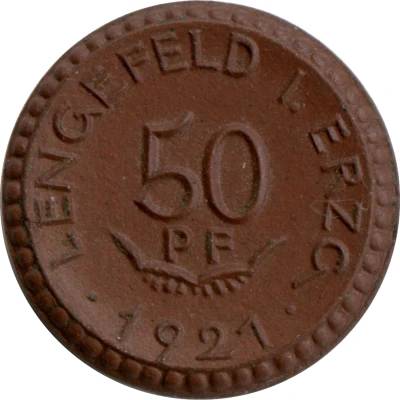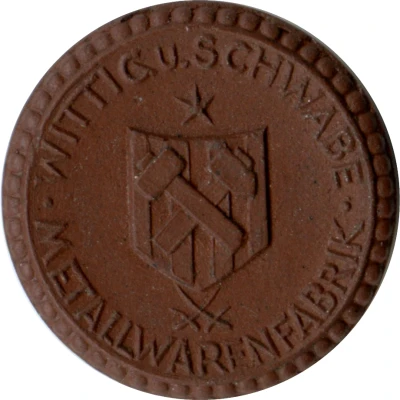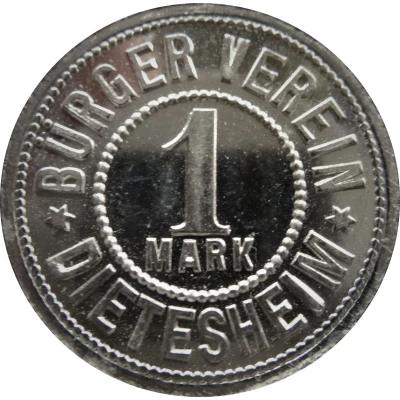


© polisciprof (CC0)
50 Pfennigs - Tannhausen Meyer Kauffmann
1921 year| Porcelain (brown) | 3.1 g | 24 mm |
| Issuer | German notgeld (Germany) |
|---|---|
| Period | Weimar Republic (1918-1933) |
| Type | Standard circulation coin |
| Year | 1921 |
| Value | 50 Pfennigs (50 Pfennige) (0.50) |
| Currency | Mark (1914-1924) |
| Composition | Porcelain (brown) |
| Weight | 3.1 g |
| Diameter | 24 mm |
| Shape | Round |
| Technique | Milled |
| Orientation | Medal alignment ↑↑ |
| Demonetized | Yes |
| Updated | 2024-10-04 |
| Numista | N#244464 |
|---|---|
| Rarity index | 89% |
Reverse
Script: Latin
Lettering: M K
Edge
Plain
Comment
2 Variants of edge:© PA-ENGINEER
Interesting fact
One interesting fact about the 50 Pfennigs - Tannhausen (Meyer Kauffmann) 1921 coin from German notgeld (Germany) made of Porcelain (brown) weighing 3.1 g is that it was created during a time of economic crisis in Germany, specifically during the hyperinflation period of the 1920s. The coin was made of porcelain, which was a unusual material for coins at the time, and it was designed to be used as a substitute for the official German currency, the Reichsmark, which was devalued due to the inflation. This coin is a unique example of how people adapted to the economic situation and found ways to create alternative forms of currency during times of financial instability.



